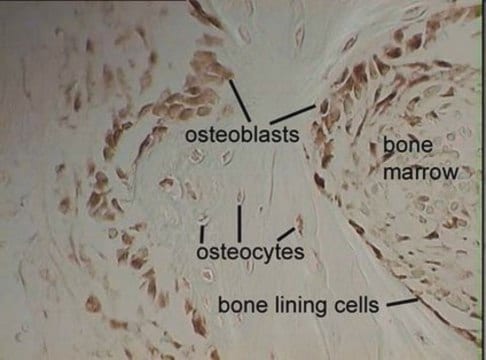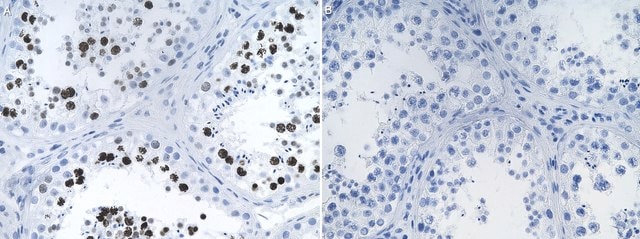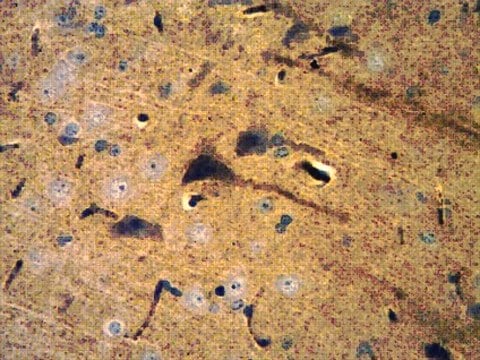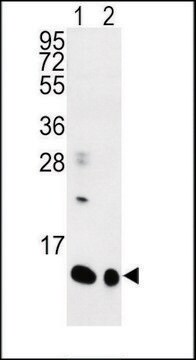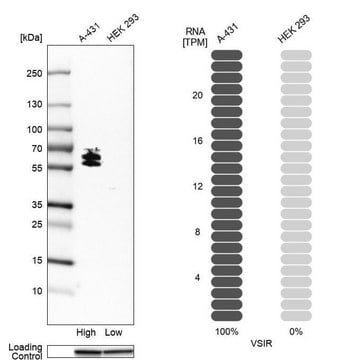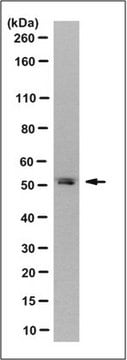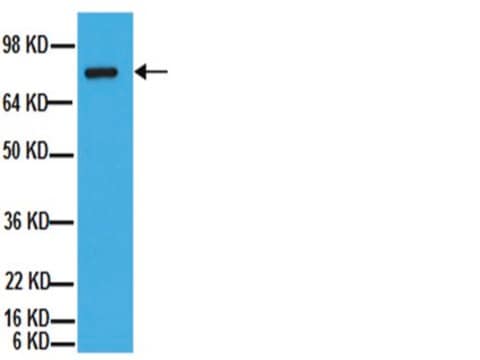MAB3291
Anti-HRAS Antibody
CHEMICON®, mouse monoclonal, 7D7.2
Sinónimos:
Anti-C-BAS/HAS, Anti-C-H-RAS, Anti-C-HA-RAS1, Anti-CTLO, Anti-H-RASIDX, Anti-HAMSV, Anti-HRAS1, Anti-RASH1, Anti-p21ras
Seleccione un Tamaño
446,00 €
Seleccione un Tamaño
About This Item
446,00 €
Productos recomendados
Nombre del producto
Anti-H-Ras Antibody, clone 7D7.2, clone 7D7.2, Chemicon®, from mouse
origen biológico
mouse
Nivel de calidad
forma del anticuerpo
purified antibody
tipo de anticuerpo
primary antibodies
clon
7D7.2, monoclonal
reactividad de especies
rat, mouse, human
fabricante / nombre comercial
Chemicon®
técnicas
ELISA: suitable
western blot: suitable
isotipo
IgG2b
Nº de acceso NCBI
Nº de acceso UniProt
Condiciones de envío
wet ice
modificación del objetivo postraduccional
unmodified
Información sobre el gen
human ... HRAS(3265)
Especificidad
Inmunógeno
Aplicación
Signaling
MAP Kinases
ELISA
Optimal working dilutions must be determined by end user.
Forma física
Almacenamiento y estabilidad
WARNING: The monoclonal reagent solution contains 0.1% sodium azide as a preservative. Due to potential hazards arising from the build up of this material in pipes, spent reagent should be disposed of with liberal volumes of water.
Otras notas
Información legal
Cláusula de descargo de responsabilidad
¿No encuentra el producto adecuado?
Pruebe nuestro Herramienta de selección de productos.
Código de clase de almacenamiento
10 - Combustible liquids
Clase de riesgo para el agua (WGK)
WGK 2
Punto de inflamabilidad (°F)
Not applicable
Punto de inflamabilidad (°C)
Not applicable
Certificados de análisis (COA)
Busque Certificados de análisis (COA) introduciendo el número de lote del producto. Los números de lote se encuentran en la etiqueta del producto después de las palabras «Lot» o «Batch»
¿Ya tiene este producto?
Encuentre la documentación para los productos que ha comprado recientemente en la Biblioteca de documentos.
Filtros activos
Nuestro equipo de científicos tiene experiencia en todas las áreas de investigación: Ciencias de la vida, Ciencia de los materiales, Síntesis química, Cromatografía, Analítica y muchas otras.
Póngase en contacto con el Servicio técnico